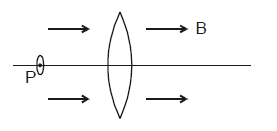Two large metal sheets carry surface currents as shown in figure. The current through a strip of width is , where is a constant. Find the magnetic field at the point and .
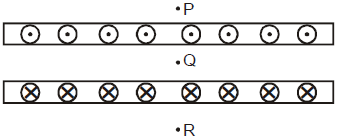


Important Questions on Magnetic Effect of Current
Magnetic effect of the current and magnetic force on charge or current a neutron, a proton, an electron and an -particle enters a uniform magnetic field with equal velocities. The field is directed along the inward normal to the plane of the paper. Which of these tracks followed are by electron and -particle.
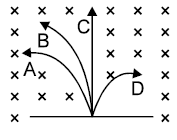
Two long parallel wires carrying currents and in the same direction (directed into the plane of the paper) are held at and , respectively, such that they are perpendicular to the plane of paper. The points and are located at a distance of and , respectively, from a collinear point .

(a) An electron moving with a velocity of along the positive -direction experiences a force of magnitude at the point . Find the value of .
(b) Find all the positions at which a third long-parallel wire carrying a current of magnitude may be placed so that the magnetic induction at is zero.
A particle of mass and positive charge , moving with a uniform velocity , enters a magnetic field as shown in the figure. Find the radius of the circular arc it describes in the magnetic field. Find the angle subtended by the arc at the centre. How long does the particle stay inside the magnetic field? Solve the three parts of the above problem if the charge on the particle is negative.
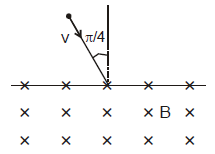
A particle of mass and charge is projected into a region having a perpendicular magnetic field . Find the angle of deviation (figure) of the particle as it comes out of the magnetic field if the width of the region is very slightly smaller than
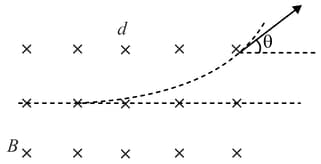
and
The figure shows a convex lens of focal length lying in a uniform magnetic field of magnitude parallel to its principal axis. A particle having a charge and mass is projected perpendicular to the plane of the diagram with a speed of . The particle moves along a circle with its centre on the principal axis at a distance of from the lens. The axis of the lens and of the circle are the same. Show that the image of the particle goes along a circle and find the radius of that circle.
